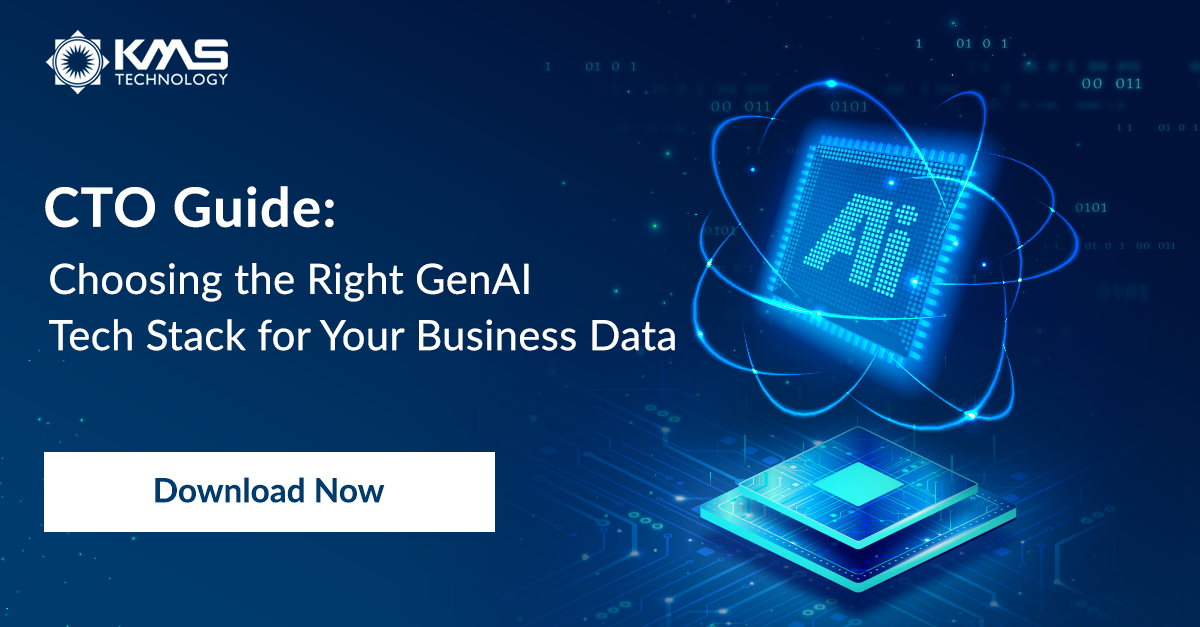Choosing the Best Generative AI Model For Your Business
With so many generative AI tools on the market, software companies must determine the right models for their use cases.
Technologists must weigh several competing factors to find the right solution:
- Cost
- Domain knowledge
- Ease of adoption
- Privacy
- Data prerequisites
That said, technologists should consider different models for different purposes. Rather than sticking to a single model, teams should first determine what they’re trying to accomplish and choose a model accordingly.
While there are many nuances and variations in generative AI models, we’ll group them into public and custom (or private) models to simplify the discussion. Deciding between a public and custom model is one of the most significant decisions in leveraging generative AI, as it will determine the type of outputs you’ll receive and how you can use them.
Let’s dive in.
Private vs. Custom AI Models
| Criteria | Public Generative AI Models | Custom Generative AI Models |
| Cost | Low upfront costs. Most models are available for immediate use either free or with a subscription. | Very high upfront costs due to development, training, and customization. |
| Data | Trained on a diverse range of public data, leading to more generic outputs. | Trained on specific, often proprietary, data for tailored outputs. Data must be cleaned and prepared in advance of training. |
| Ease of Use | Generally user-friendly and require less technical expertise to operate. | May require more technical expertise to develop, manage, and operate. |
| Customization | Limited customization, designed to cater to a broad audience. Outputs may not be highly specialized. | Highly customizable, tailored to specific organizational needs. |
| Security & Privacy | Potential security and IP risks due to the public nature of the models. | Enhanced security and IP protection as models are organization-specific. |
| Output Quality | Tend to generate generic content, may lack nuanced understanding. | Capable of producing specialized, high-quality, nuanced content. However, smaller training data sets may restrict the model’s adaptability. |
| Implementation | Quick to implement as they are pre-built and ready to use. | Can be very time-consuming to develop, train, and optimize. |
| Scalability | May be difficult to scale internally depending on how users prompt and approach the models. Internal changes in the model may also generate non-repeatable outputs. | Scalability can be customized based on organizational needs, and internal guardrails can emphasize repeatability.. |
| IP & Data Ownership | Risks of data being accessible by third parties, potential IP issues. | Full control over IP and data, minimizing security and privacy risks. |
| Maintenance | Maintained by the provider, users have little control over updates and improvements. | Can be maintained and updated based on the organization’s specific needs. |
Public Generative AI Models
Public generative AI models like ChatGPT are available for companies to leverage as-is. While the barrier to entry is incredibly low (all you need is an account and the ability to ask questions to get started), public models are quite generic and may pose some risks.
Because ChatGPT has been trained on the entirety of the internet, it struggles with specialization, nuance, and complex “thinking,” especially when tasked with niche problems. A human expert in the field is necessary to guide ChatGPT to useful outputs, to verify them, and to turn the raw text into a polished final version.
Additionally, organizations risk copyright infringement if models generate code or content wholesale from a copyrighted source—a problem that’s not often apparent to the end user (seen in this lawsuit against Microsoft). Organizations also risk open-sourcing their software or content if it’s not sufficiently human-directed, as AI outputs cannot be copyrighted as of May 2023.
There are other risks besides liability. While OpenAI does allow organizations to turn off logging, the default ChatGPT settings capture inputs and outputs for training data—meaning proprietary information can be accessed by other parties.
Organizations should also consider the implications of relying too much on public models. Because the outputs tend to be generic (even with advanced prompting), organizations risk losing a competitive advantage if other entities take advantage of these models in the same way. Even if content and code outputs aren’t identical, public models struggle with true innovation that can set your products and company apart.
That said, tools like ChatGPT are great introductions to generative AI. The natural language interface is incredibly intuitive, and a quick way to start familiarizing and training teams on this emerging technology. Companies can immediately ramp up and start gaining the benefits of generative AI without investing the significant time and money into custom models.
Another benefit of public models is the vast library of plug-ins that are constantly developed by third-parties. Plug-ins can manage the heavy lifting of specialized tasks without the significant investment involved in building custom models; that said, these plug-ins will have their own limitations and security risks.
Pros
- No / Low Cost: Public models often require minimal investment. They are readily available and can be accessed either for free or through a subscription-based model. This is especially beneficial for startups and small companies with limited budgets.
- Quick Deployment: Being pre-trained and ready to use, public models allow companies to implement AI capabilities quickly, without the need for extensive development or training periods.
- Ease of Use: Public models are generally user-friendly and don’t require deep technical expertise. They come with intuitive interfaces and easy-to-use APIs, enabling companies to integrate them with minimal effort.
- Community Support: Given their widespread use, public models often have a large community of users. This can be a valuable resource for troubleshooting, sharing insights, and getting support.
Cons
- Generic Outputs: Because they are designed for a broad audience, public models can produce generic and non-specialized outputs. This can limit their effectiveness in specific or niche applications.
- Security Concerns: Public models may pose security risks, especially concerning data privacy. The public nature of these models can sometimes lead to vulnerabilities and exposure of sensitive information.
- Limited Customization: These models offer limited options for customization. Companies might find it challenging to tailor public models to meet their specific needs and requirements.
- Intellectual Property Issues: There’s a risk of inadvertently generating content or code that infringes upon existing copyrights or patents, leading to legal complications, or in open-sourcing your own code.

Custom Generative AI Models
Custom generative AI models are trained on your company’s data, enabling much more subtle and nuanced responses specific to your industry and organization. With custom models, AI can act in a much more advanced capacity, replicating the work of a human in the field.
For example, a chat support feature could be enhanced with custom models trained on an entire library of product release notes, technical documentation, and internal guidelines. Armed with all internal knowledge, the chatbot can serve customers in a way that simply isn’t possible with public models.
Custom models can be built from scratch or on top of open source models.
There are two approaches to augment an existing model:
- Fine-Tuning: Re-train an existing model with specific weights based on your organization, using internal data. As a result, the model can respond with the same capabilities of ChatGPT, but with more specificity.
- Embedding: Less expensive than fine-tuning, embedding also produces a less refined result. It narrows the scope of what a model can respond to, and the model can’t respond if asked something outside of its knowledge base. Embeddings are large vectors that summarize text, used to inject context into the model without extensive training.
- Autonomous Agents: Taking embeddings a step further, autonomous agents are a faster and more cost-effective option than a fully custom model. Autonomous agents are the future of large language models, able to complete specific tasks customized to business use cases–without human intervention after the embedding process.

This image, from Choosing the Right Generative AI Tech Stack for Your Business Data, demonstrates the direct integration with ChatGPT and a vector database to handle a large knowledge base (a typical tech stack for managed services). The knowledge base data must be converted to a vector format known as embeddings and the vectorized embedding data is stored in vector databases.
All of these approaches have their benefits, and the right choice depends on your use case. However, they also add significant value not achieved by vanilla public models. Custom models offer a stronger competitive advantage because of their ability to specialize and generate unique outputs based on your data.
That said, the quality of outputs depends on the quality of your data. Without strong data governance in place, your models will be ineffective, prone to hallucinations or the inability to respond. Thus, organizations must have a solid foundation before they can take advantage of custom models, adding significant time and cost increases for those who need to catch up.
Pros
- Domain expertise: Designed specifically to meet organizational and industry needs, delivering highly relevant and specialized outputs.
- Better Responses: Generates highly accurate and contextually appropriate responses akin to insights from human experts.
- Enables Monetization: Facilitates creating and offering unique, value-added services and products, driving revenue generation.
- Enhanced Security & IP Protection: Full control over generated content, safeguarding against IP theft or infringement. Enhanced data protection mitigates the risk of breaches or leaks.
Cons
- High upfront costs that increase with the amount of data
- Requires robust data governance
- Time-consuming to build
Learn more about the difference between custom and public models with our CTO Roundtable Recap: Harnessing Generative AI in Software Development.
Choosing a Generative AI Model for Your Use Case
By understanding the types of models available, organizations can better serve their customers and employees with this emerging technology. The various capabilities have near endless use cases, but they each require a different model and approach:
Industry-Specific Applications
- Goal: Developing AI applications tailored to specific industry needs, terminologies, and challenges.
- Recommended Model: Custom Model via Embeddings
- Rationale: Embeddings enable solutions specific to a business use case without the extensive cost and time invested in a custom model.
Quick Implementations
- Goal: Rapidly integrating AI capabilities to gain immediate benefits.
- Recommended Model: Public Generative AI Models
- Rationale: Pre-built and ready to use, public models ensure quick implementation and usability.
IP Protection & Data Security
- Goal: Ensuring the security of proprietary information and intellectual property.
- Recommended Model: Custom Generative AI Models
- Rationale: Custom models offer enhanced data security and IP protection, as they are developed and housed within the organization.
Automated Code Generation & Review
- Goal: Automate the process of code writing and reviewing to enhance productivity and code quality.
- Recommended Model: Custom Generative AI Models for specialized needs, Public Models for general coding assistance.
- Rationale: Custom models can be trained with company-specific coding practices and standards. Public models can assist in general coding but may not adhere to company-specific nuances.
AI-Powered Testing
- Goal: Implement AI to automate testing processes, including unit, integration, and user testing.
- Recommended Model: Custom Generative AI Models
- Rationale: A custom model can be tailored to understand the specific architecture and requirements of your software, leading to more accurate and efficient testing.
Personalized User Experiences
- Goal: Enhance user experience by offering personalized features, recommendations, and interactions.
- Recommended Model: Custom Generative AI Models
- Rationale: Custom models can process and analyze user data to offer highly personalized experiences aligned with user preferences and behaviors.
Content Generation
- Goal: Generating diverse content at scale.
- Recommended Model: Depends on the specificity and quality needed.
- Rationale: Public models are sufficient for generic content but for specialized, high-quality content, custom models are preferable.
Customization & Flexibility
- Goal: Achieving highly customized AI solutions that align with specific organizational needs and objectives.
- Recommended Model: Custom Generative AI Models
- Rationale: These models can be tailored and fine-tuned to meet the unique requirements and constraints of the organization.
Scalability & Performance Optimization
- Goal: Optimize software performance and ensure scalability to handle increased user load.
- Recommended Model: Public for basic optimizations, Custom for intricate, system-specific optimizations.
- Rationale: Custom models can offer detailed insights and solutions based on the specific software architecture and user base.
Security & Fraud Detection
- Goal: Enhance software security protocols and detect fraudulent activities in real-time.
- Recommended Model: Custom Generative AI Models
- Rationale: Custom models can be trained on company-specific data and patterns to identify and mitigate security threats and fraud effectively.
Feature Development
- Goal: Rapidly develop and deploy new features to meet user demands and market trends.
- Recommended Model: Custom Generative AI Models for specialized features, Public Models for generic features.
- Rationale: Custom models allow for the creation of unique, innovative features, while public models can be used for general, non-specialized feature development.
Each organization will have different needs and different standards when it comes to protecting proprietary information. Ultimately, a generative AI consultant can help guide you to the right decision.
How KMS Can Help
It’s nearly impossible to keep up with the rapidly shifting world of generative AI, the litigation in flight, and the new tools available while working your day job.
Our generative AI consultants can help. Our dedicated experts are on top of the latest research and developments in generative AI, with decades of experience in implementing a myriad of AI solutions. We’re driven by real, practical use cases that create ROI—not hype.
We can help you roadmap and build your generative AI solutions, all while protecting your IP and data. In fact, we’ve written guidance on how best to do just that.
Talk to our team to learn more.







